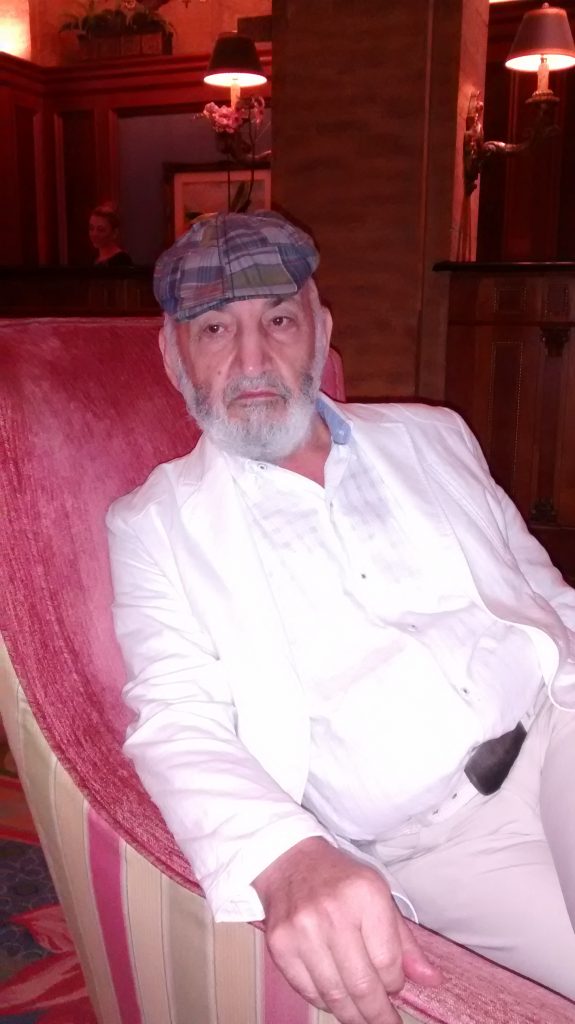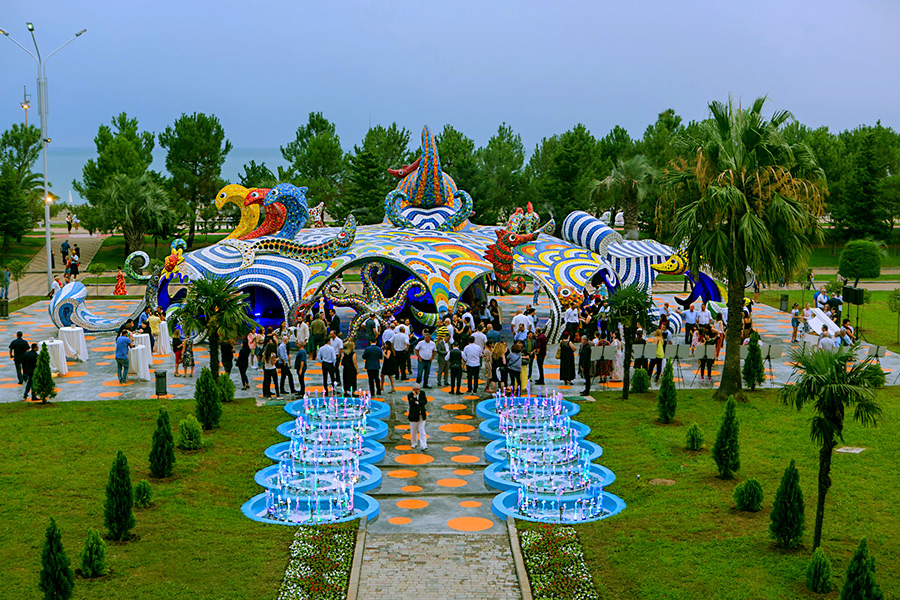
Isak Bini
~ SHORT BIOGRAPHY ~
With his diversity, creativity, and multifaceted nature Isak Bini managed to incorporate various fields of business into his professional career in the United States. He has designed and redesigned mansions and commercial buildings. Worked closely with developers. Established 3D animation and video production company. Produced commercials and infomercials. Invented and published DVD video magazine. His company designed and fabricated decorative elements for Walt Disney World’s theme parks and resorts. Designed and build furniture and high-end interior decorations which sold throughout the nation’s largest retailers and department stores.

~ PAST ARCHITECTURAL WORK ~
Extraordinary! This is how the architecture of Isak Bini would be described. Indeed his sculptural architectural pieces are the monumental works of art of the 20th century. Isak Bini was born and raised in the former Soviet Union. From a very young age, it was already evident that he was destined to become a great architect and a designer. In 1962, his diploma work, called “The Airport of the Future”, won him first place in the National competition (held once every three years). He was awarded a trip to foreign countries which he never got to enjoy, somebody else was sent instead of him.
His very first project Mr. Bini realized at the age of 28, in his hometown Gori. It was a beautiful monument, in the shape of an opened scroll, dedicated to the world acclaimed 11th-century Georgian writer Shota Rustaveli. The monument was built and it’s still standing at the foot of the historic landmark of the city “the Gori Fortress”. Just days before the grand opening of the monument, stonemasons didn’t come to finish the final ornamental carvings on the walls of the monument. Without thinking twice, Mr. Bini took it upon himself to finish the work. He grabbed a chisel and a hammer and carved out missing ornaments with his own hands, completing his work flawlessly for the grand opening day.
Right after finishing his six-year education in the National Academy of the fine arts of the Country Georgia, a young architect quickly became part of many significant architectural projects in the Capital of the Country Georgia. He was assigned to closely work alongside with chief architects there. In 1969 he worked on the completion of the country’s largest contemporary cultural center, formerly known as “Country’s Great Concert Hall of Philharmony” located in the capital of the Country Georgia which accommodates up to 2300 spectators, has a movie theater, café-restaurant, and a hall for exhibitions and special events.
In 1975 Mr. Bini was again chosen to participate in the completion of the Ministry of Highways, a building where his office was located and as an architect, designer, and engineer. Today this multi-story contemporary building is listed amongst the most extraordinary buildings in the world. Presently it functions as the main bank of the country Georgia. It took him nearly ten years to convince the government to make a shift from the “square” and the traditional and to let him build bionic shaped sculptural-architectural structures to beautify resort areas and roads of the country.
Finally in 1974, during the time of the Iron Curtain, Mr. Bini convinced the skeptics and pioneered building the very first bionic-shaped pavilion in the country. He called his first design “the Elephant”. It stood as tall as a two-story building, completely covered and decorated with shimmering colorful Smalt (a custom-made and patented glass mosaics made in St. Petersburg). Because of its asymmetrical shape and a very light, thin-walled structure, everyone thought that the pavilion would eventually collapse, but to everyone’s astonishment, it stood tall and unshakably strong.
Since “the Elephant” was an experimental project, Mr. Bini, the architect and the designer of this novelty, was put in charge of every aspect of its construction, from structural engineering to its finish. The city provided scrap materials and minimal labor power because it lacked financing. Thus, Mr. Bini had to improvise, rely on his intuition, creativity, and even on his physical strength, since he had to bend steel rods with his muscle power to give a needed shape to the elaborate Gridshell structure of the pavilion. Everything was welded on the spot, the Gridshell was covered with an iron mesh, and finally, this thin, spiderweb-like metal surface was covered with concrete, giving it a hollow shell-like look. All Surfaces inside out were smoothed out and then the entire exterior was covered and decorated with colorful Smalt, a beautiful glass mosaic.
Soon after its successful completion photos of “the Elephant” appeared in the foreign magazines of Europe and Japan. After receiving positive reviews Russian government became very interested to build similar pavilions at the seashores of the Black Sea. Thus “The Elephant” pavilion gave birth to the next architectural masterpiece “The Caffe Fantasy”. It was shaped in resemblance to waves of the sea, displaying on its surface extraordinarily shaped sea creatures: fish, dolphins, seahorses, and starfish. The entire surface of the pavilion was covered with a shimmering colorful glass mosaic, beautiful and artful designs dynamically flowing over the curvy surface of the pavilion. Inside of the pavilion was a small cafe placed right in the wide-opened mouth of a giant fish.
After its completion in 1976, this unique structure quickly became a favorite tourist destination from all over the world. Today it is considered the icon of the City Batumi of Georgia. After the fall of the Soviet era and civil wars which began after 1991, the pavilion was damaged and abandoned. It was only restored to its original beauty and reopened on August 14, 2019. It sits between the seashore of the black sea and the Hilton Hotel in Batumi Georgia.